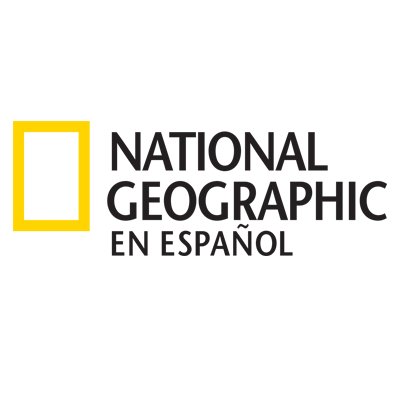Similar User

@FernandoArchuby
A new early water frog (Telmatobius) from the Miocene of the Bolivian Altiplano onlinelibrary.wiley.com/doi/full/10.10… @raulogomezUBA @MEPLab_UBA @CONICETDialoga @MorphoBank @wileyearthspace

#FossilFriday 🥩🇦🇷Holotype cranium of the ~20 million-year-old meat-eating #marsupial Acrocyon riggsi from #Patagonia, #Argentina. Nice #teeth, some bone, lots of plaster! #sparassodont



#FossilFriday 🇧🇴Articulated hand (cast) of the dog-sized middle #Miocene #notoungulate Hemihegetotherium trilobus - one of many beautiful specimens from Quebrada Honda, #Bolivia. For the latest on QH geology, check out our just-published PPP article: sciencedirect.com/science/articl…

#FossilFriday 🇨🇱🇧🇴Exquisitely preserved jaw of Miochinchilla surirense, a ~18 million-year-old chinchillid #rodent from #Chile - one of two new species we named this week that fill a large gap in the group's fossil record. Check out our paper for details! rdcu.be/cDpa5

#FossilFriday 🇧🇴Awesome armadillo skull from the middle #Miocene of #Bolivia. Based on its robust teeth and skull, this relative of modern hairy armadillos (Euphractidae*) was probably rather omnivorous. *Recent data suggest we should recognize four extant armadillo families.

#FossilFriday 🇧🇴~15 million-year-old #armadillo #osteoderms (shell bones) from the #Miocene of #Bolivia. The surface grooves really pop out with angled light! They indicate where scales attach and are useful for identifying species. (Keratinous scales generally don't fossilize.)

#FossilFriday For #CrinoidWeek, we're posting this Platycystites from the Ordovician Bromide Fm of Oklahoma. While not actually a crinoid, this specimen belongs to a short-lived group named Paracrinoids - although they're more similar to cystoids than to crinoids 🤷♀️ @ucmpberkeley


The new #Tupandactylus for those who haven't seen it. Credited to Victor Beccari and due to be published in PLOS ONE like.. now (but already all over the science press. I think publication of the paper has been inadvertently delayed). #pterosaurs

Unusual fossilization: mammal skeletons in gastric pellets from dinosaur nesting site onlinelibrary.wiley.com/doi/full/10.11… @montanastate @MorphoSource @datadryad @wileyearthspace

#FossilFriday 🇦🇷 Here are some smiling #notoungulate #teeth to wish you Happy Friday! (I added eyeballs to one to help you visualize it.) This "face" pattern of fossettes is characteristic of many early notoungulates. These 🦷🦷🦷 are about 45 million years old (middle #Eocene).

#FossilFriday 🇨🇱🐭Pretty little chinchillid #rodent palate from the beautiful site of Laguna del Laja, #Chile. It lived ~18-17 million years ago and was much smaller than its closest living relative, the plains viscacha (Lagostomus maximus), which can weigh up to 8-9 kg.

¡#BuenosDías! Migraciones humanas • vía @simongerman600 #VideoCiencia roughnecktwozero/Reddit con datos de elevación #SRTM de @NASAEarthData
#FossilFriday 🇧🇴A typical selection of #Miocene #mammal fossils from #Bolivia - where I would normally be doing fieldwork this time of year! Hopefully we'll be back in 2022. The most common remains at this site are mesothere #notoungulates and chinchillid #rodents. 🐭

Bust of Our Lady of Sorrows (Mater Dolorosa) by the spanish sculptor Pedro Roldan, Seville, c. 1670-1675, made of poplar wood. Now on display at the Bode Museum in Berlin.

Arqueólogos ubicaron nuevas estructuras y descubrieron objetos nunca antes vistos en #ChichénItzá ngenespanol.com/descubrimiento…
United States Trends
- 1. Remy 39,1 B posts
- 2. YouTube TV 99,5 B posts
- 3. $CUTO 7.661 posts
- 4. $LINGO 51,2 B posts
- 5. #Drgreennft N/A
- 6. $PHNIX 7.383 posts
- 7. Claressa 8.978 posts
- 8. NYSE 47,7 B posts
- 9. Eazy 6.362 posts
- 10. gracie 17,2 B posts
- 11. Person of the Year 200 B posts
- 12. #thursdayvibes 5.406 posts
- 13. YTTV N/A
- 14. #supersoft N/A
- 15. Hulu 13,1 B posts
- 16. Cable 20,9 B posts
- 17. Man of the Year 35,8 B posts
- 18. New York Stock Exchange 75,3 B posts
- 19. Zuckerberg 46,8 B posts
- 20. Cramer 9.323 posts
Who to follow
Something went wrong.
Something went wrong.





























































